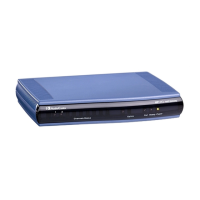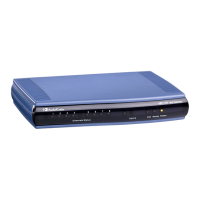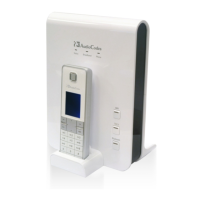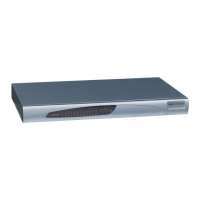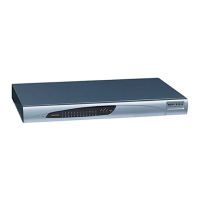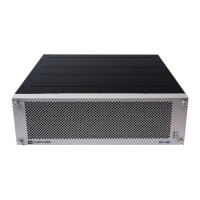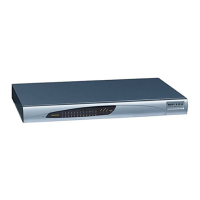CHAPTER50 System Status
Mediant 1000 Gateway & E-SBC | User's Manual
Table 50-2: Description of Graphical Display of Device on Monitor Page
Item #1 Description
1 Alarms: Displays the highest severity of an active alarm raised (if any) by
the device:
■ Green = no alarms
■ Red = Critical alarm
■ Orange = Major alarm
■ Yellow = Minor alarm
To view active alarms, click Alarms to open the Active Alarms page (see
Viewing Active Alarms).
2 Module slot number.
3 Module interface type.
4 Module status icon:
■ (green): Module has been inserted or is correctly configured
■ (gray): Module was removed and "Reserved" is displayed
■ (red): Module failure and "Failure" is displayed
5 Port analog channel status icon:
■ (gray):
✔ FXS (one of the following):
The port is physically connected to an FXS analog device (e.g.,
telephone), which is in idle state (i.e., on-hook position).
-or-
The port is not physically connected.
✔ FXO: The port is physically connected to an FXO analog device (e.g.,
PBX), which is in idle state (i.e., on-hook position).
■ (green): The FXS or FXO port is physically connected to an analog
device, which is in off-hook state with an established call (i.e., active
RTP stream).
■ (red):
✔ FXS: n/a
✔ FXO:
The port is not physically connected.
-or-
If the port is physically connected to an FXS analog device, it is
out-of-service due to Serial Peripheral Interface (SPI) failure.
■ (blue): The FXS or FXO port is physically connected to an analog
device which is in off-hook state, but no established call.
Port trunk status icon:
■ (gray): The trunk is not configured (i.e., not in use or disabled).
- 926 -
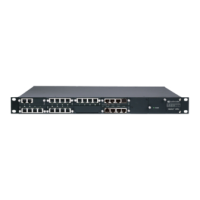
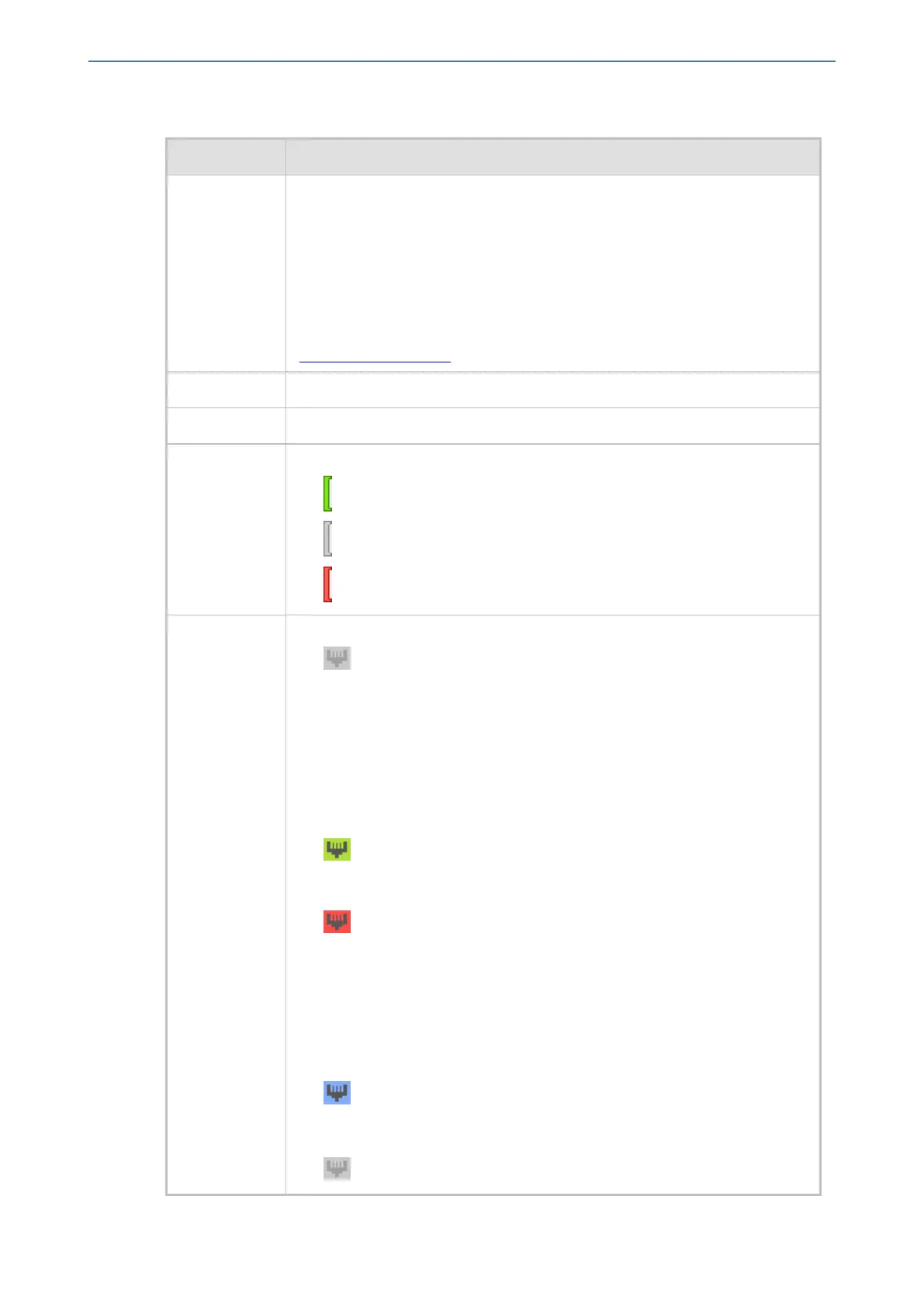